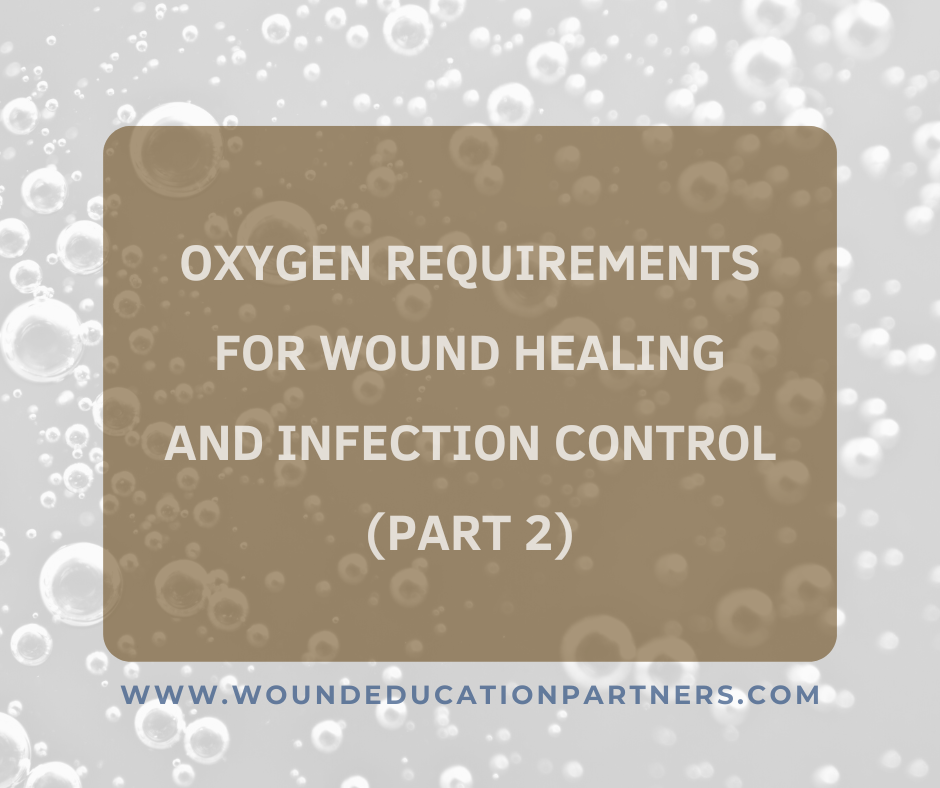Rx Pad
OXYGEN REQUIREMENTS FOR WOUND HEALING AND INFECTION CONTROL (PART 2)
The second source of information regarding perfusion-oxygen needs for wound healing arises from indirect information . It is obvious that markedly increased blood flow and oxygen availability are required to heal a wound and control infection.(19) Perfusion and oxygen requirements are minimal for noncritical tissues that do not have wounds or infections because they are in a steady-state, resting status. An example of this would be the feet of the patient with advanced peripheral artery disease. If a relatively minor wound occurs in one foot, healing may not occur, and a lower limb amputation becomes necessary. In contrast, in the opposite limb that does not have a wound, but perfusion is equally poor, the foot is not immediately at risk for an amputation.
Observations such as this have led us to conclude that perfusion-oxygen and metabolic requirements for wound healing and resolution of infection need to increase 20-fold or more. This is based on several anatomic and physiologic explanations. The first is the reserve capacity of the vascular tree that is highly regulated by activity of the sympathetic nervous system coupled with metabolic demands . An average-sized human has a blood volume of approximately five liters. The calculated potential capacity of the vascular system is over 20 liters when every vascular component such as arteries, veins, sinusoids, arterial-venous shunts, and bone marrow are maximally filled with blood.(4,12) From this information, we reason that there is the potential to increase blood flow to a noncritical tissue with increased metabolic demands (for example, for wound healing and/or managing infection) that approaches a factor of 20 . This is further supported by the classical findings of hyperemia, increased temperature, and swelling/engorgement (i .e ., rubor, calor, and tumor) observed in healing wounds . Another observation of how much blood flow can increase is observed in skeletal muscle. Greater than 20-fold increases in muscle blood flow have been observed between resting states and maximal exercise.(4)
With respect to infections, during the oxygen bust to kill bacteria in the phagocyctic vesicle, oxygen uptake increases more than a hundredfold.(1,5,17-18) This increased oxygen requirement, of necessity, arises through the mechanism of increased blood flow. During healing of fractures, blood flow increases six- to eightfold. Cardiac outputs have the ability to increase fivefold through filling and rate changes. From the pathology lab, we have observed blood vessels whose lumens were reduced more than 80% from atherosclerosis, yet amputations did not become necessary until wound problems developed. Many revascularizations occlude with time after wound healing has occurred. Usually, the limb is not in jeopardy because of the decreased metabolic demands tissues have after healing and infection control. The growth of collateral vessels, even though perfusion may be a fraction of what the normal perfusion was, is sufficient to meet steady-state metabolic demands. Finally, even with tenfold increases in tissue fluid oxygenation that HBO2 provides, some wounds do not heal. This suggests that a factor over tenfold is necessary to achieve wound healing and infection control. When observations such as these are considered, increased blood flow and oxygen deliver to heal the wound approaches the 20-fold number stated above.
Excerpted from Hyperbaric Medicine Practice 4th Edition with permission from the publisher. Reference Chapter 13, The Role of Oxygen and Hyperbaric Oxygen Mechanisms by Michael B. Strauss, Lientra Q. Lu
Are you seeking basic training in hyperbaric medicine? Our UHMS approved 40-hour Introduction to Hyperbaric Medicine training course will teach you and your team the key fundamental elements and concepts in practicing hyperbaric medicine safely and effectively.
When you subscribe to the blog, we will send you an e-mail when there are new updates on the site so you wouldn't miss them.



Comments